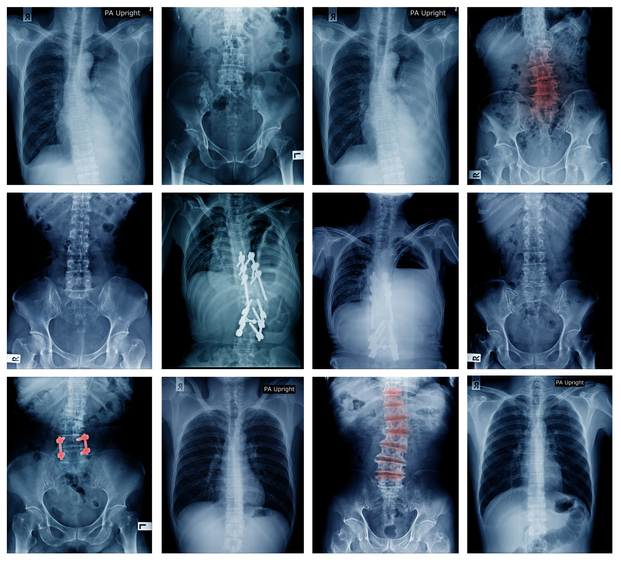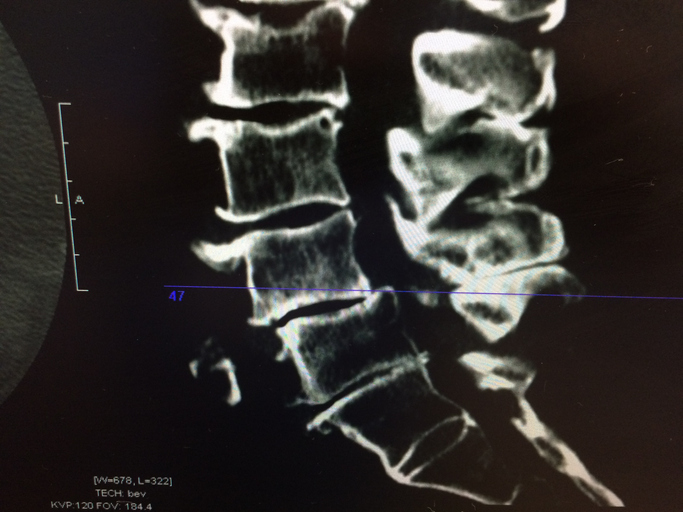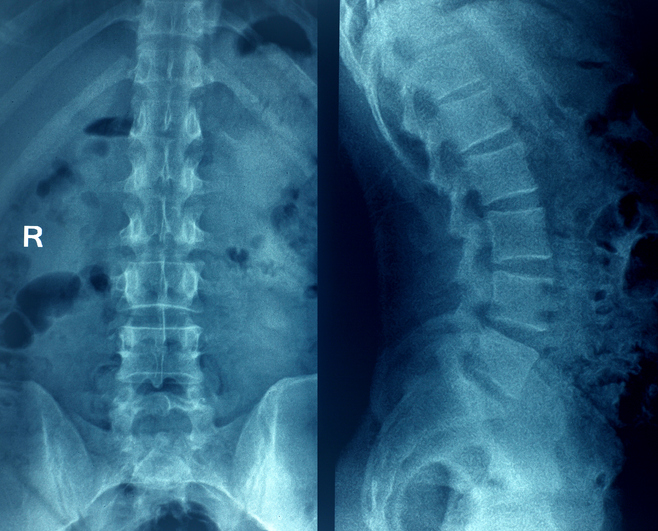Pain
10 Frequently Asked Questions About Lumbar Spinal Stenosis

What is spinal stenosis?
Spinal stenosis is a narrowing of the spinal canal. It occurs when the bony openings within the spine (foramina) begin to narrow, placing pressure on the nerves traveling throughout the spine. This reduced nerve space can occur within the spinal cord or where the spinal nerves exit the spinal canal.
The spine (backbone) runs from the neck to the lower back. The bones of the spine (vertebrae) form the spinal canal, which houses the spinal cord and nerves. If a spinal nerve or the spinal cord becomes compressed, pain, numbness, muscle weakness, or tingling may occur. Spinal stenosis most often occurs in the lower back (lumbar stenosis) or neck (cervical stenosis). Spinal stenosis of the upper/middle back (thoracic stenosis) is rare.
Below are 10 frequently asked questions about lumbar spinal stenosis.
What is the lumbar spine?
The lower back, or lumbar spine, is made up of five vertebrae (L1 - L5) and bears most of the body’s weight. The lumbar segment of the spine is typically responsible for lifting or carrying items. The lower back bends slightly inwards. It supports the upper spine and connects to the pelvis. Many back injuries occur in this section of the spine.
Are there risk factors for developing lumbar spinal stenosis?
Certain factors increase the possibility of developing lumbar spinal stenosis. The top three factors include individuals with the following:
- An injury to the spine
- Born with a narrow spinal canal
- Being over the age of 50
Can lumbar spinal stenosis be prevented?
Lumbar spinal stenosis is often the result of aging of the spine, which means it is not always preventable. However, there are ways to lower the risk and maintain a healthy spine. They include the following:
- Get physically active. Certain physical activities can strengthen the back muscles and keep the spine flexible. Examples include walking, swimming or cycling.
- Maintain a healthy weight. Additional stress is placed on the back due to being overweight. Maintaining a healthy weight reduces the risk of developing lumbar spinal stenosis.
- Implement a healthy posture. Sleeping on a firm mattress and sitting with the back straight can improve posture. Lift heavy objects by using the legs instead of the back.
What are the main symptoms of lumbar spinal stenosis?
Symptoms of spinal stenosis in the lower back (lumbar stenosis) include the following:
- Back pain
- Pain or cramping in one or both legs, especially when standing or walking for long periods, which eases when bending the body forward or sitting down
- Foot or leg weakness
- Tingling or numbness in the foot or leg
- Burning pain that goes into the buttocks and down the legs
- Loss of sexual ability
Can lumbar spinal stenosis cause paralysis?
Although pain typically occurs with lumbar spinal stenosis, paralysis usually does not. However, permanent numbness or paralysis can occur if a spinal nerve or the spinal cord is compressed for a long period. Consult a health care professional if numbness or weakness is present in the arms or legs.
Can lumbar spinal stenosis cause other conditions?
Certain medical conditions can develop due to lumbar spinal stenosis. They include, but are not limited to, the following:
- Spondylolisthesis is a medical condition that primarily affects the lower back (lumbar spine). It occurs when a vertebra slips forward (anterolisthesis) or backward (retrolisthesis) onto the vertebra underneath it, which may lead to nerve compression.
- Facet joint syndrome may occur due to lumbar spinal stenosis. Facet joints are small joints located between each vertebra of the spine. These joints help support the spine and allow for range of motion.
- Cauda equina syndrome is a rare but serious disorder that occurs when this nerve bundle becomes compressed or inflamed. The cauda equina is a group of approximately 10 nerves and nerve roots located at the bottom of the spinal cord. They communicate with the brain to provide motor and sensory stimulation to the legs, pelvis, bladder, anus and bowels.
Are treatment options available that do not involve surgery?
The goal of treatment for spinal stenosis is to relieve pain and improve mobility and function. Several types of non-surgical treatments are available for spinal stenosis, including the following:
- Rest
- Physical therapy
- Back brace
- Medications, such as acetaminophen, NSAIDs, oral corticosteroids, anti-seizure medicine, antidepressants, muscle relaxers, analgesics, corticosteroid injections, or anesthetic injections.
How is lumbar spinal stenosis diagnosed?
Pain is frequently experienced in the back and legs with lumbar spinal stenosis. Additionally, numbness, tingling, cramping and weakness may occur in the legs. Diagnosing lumbar spinal stenosis involves a medical history, physical examination, X-rays, and imaging tests, such as a computed tomography (CT) scan, CT myelogram, or magnetic resonance imaging (MRI).
Can applying heat or cold help relieve pain from lumbar spinal stenosis?
Temperature therapy involves the use of heat or cold to reduce pain. Heat may be a better option since it relaxes muscles, increases blood flow, and relieves aching joints. Caution should be used to avoid burning the skin. Cold therapy can reduce inflammation and tenderness. Ice can be applied to the area for 20 minutes at a time. Switching between heat and cold therapy can help reduce certain types of pain.
When should surgery be considered as a treatment option?
When conservative treatments for spinal stenosis are unsuccessful, surgery may be recommended. The goal of surgical treatment is to increase space within the spinal canal. It can reduce pressure on the spinal cord and nerve roots, relieving pain. Surgery can also help restore spinal alignment. Surgery may be considered due to the following:
- Severe symptoms and pain
- Low quality of life
- Extreme pressure on the spinal cord
- Difficulty walking
- Poor balance
- Loss of bowel or bladder control
- Sexual dysfunction


















